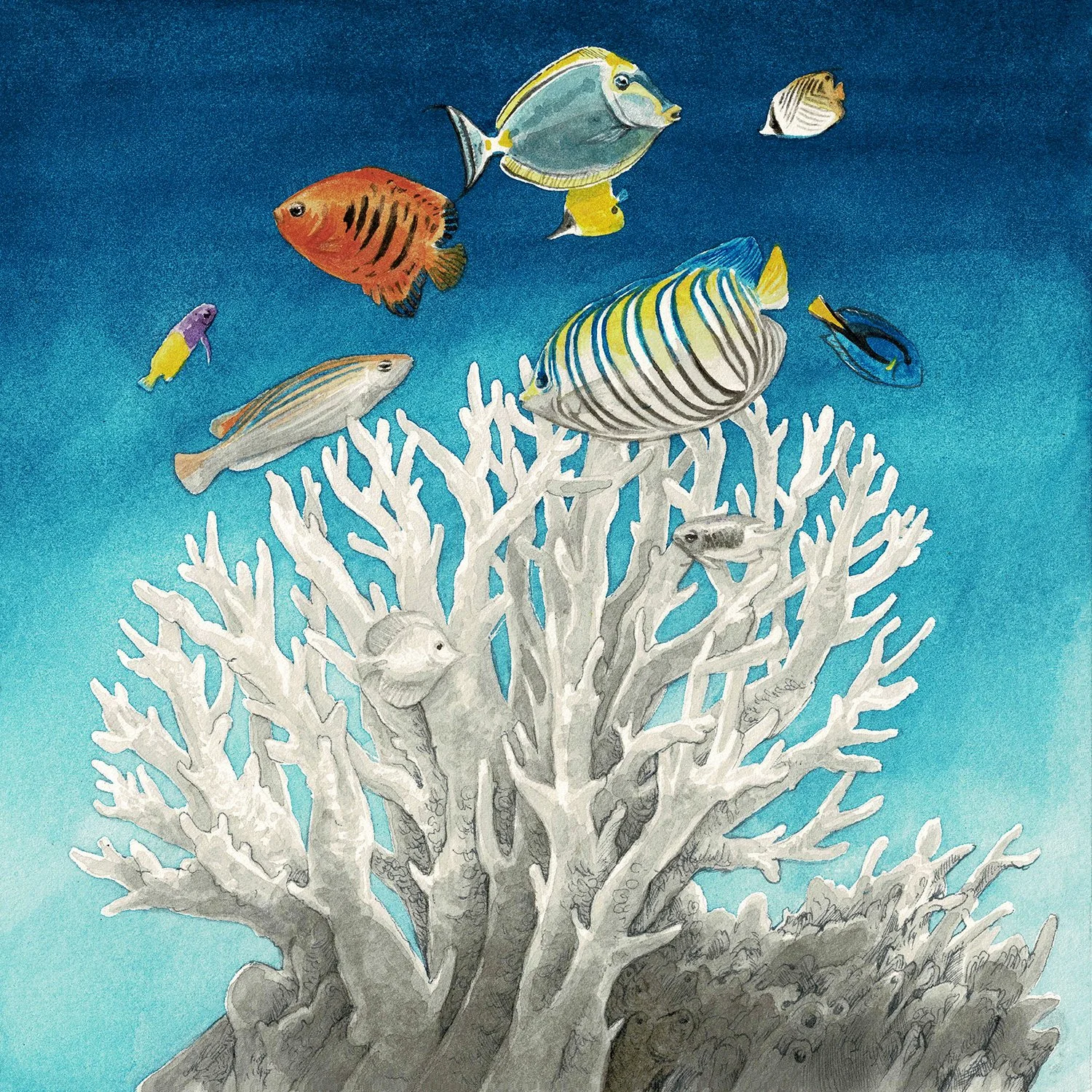Wild Art: In Peril
Wild Art: In Peril
Original piece for Wild Art 2021
Ink, watercolour, and gouache on paper
180mm x 180mm, signed, unframed
Coral reefs are some of the most diverse and valuable marine ecosystems on the planet. They support thousands of species - many that are found nowhere else. Healthy reefs are an invaluable resource for many millions of people. The fishing industry is largely dependant on reefs as many open ocean species spawn and mature there before venturing into open waters. They also greatly contribute to local tourism industries, as well as acting as natural barriers - providing a buffer against tsunamis and tropical storms.
Corals themselves are living creatures. The species’ that build reefs excrete a protective calcium carbonate exoskeleton over their polyps which slowly grow over many generations to form vast underwater structures. Living inside coral tissue is a marine algae called zooxanthellae. This algae forms a symbiotic relationship with their coral homes - providing food for the corals in return for shelter.
When corals become stressed due to rising temperatures and pollution, they instinctively expel their algae, leaving behind a ghostly white skeleton. This is known as coral bleaching. In prolonged adverse conditions, corals cannot regain this algae and eventually starve to death.
Carbon pollution and global warming have had lasting impacts on the Great Barrier Reef. Mass bleaching events are occurring more frequently - most recently with back-to-back events in 2016 and 2017. With increasingly smaller gaps between bleaching events, corals are rendered more fragile and unable to recover, which in turn leads to the overall decline of these precious ecosystems.

